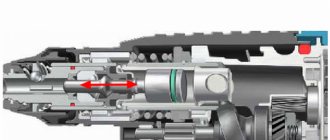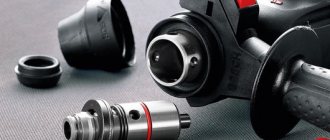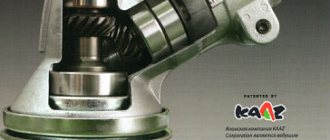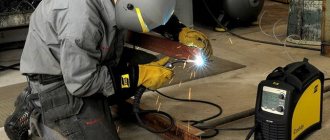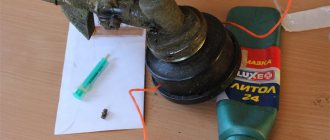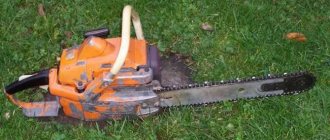Welcome to my website! This article will talk about lubrication of a rotary hammer. The operation of this tool requires more than just simple care. Be sure to periodically lubricate the gearbox and chuck.
In this case, the gearbox, of course, comes already lubricated from the factory. But over time, the lubricant leaks somewhere and dries out somewhere. Additionally, it is only designed to reduce friction, not eliminate it. Therefore, one way or another, the parts still rub against each other, which is why fine metal dust gradually forms, which remains in the lubricant.
As a result of this mixing of metal and lubricant, the properties of the latter are gradually lost and wear of parts accelerates.
Inexpensive Chinese hammer drills may be poorly lubricated at the factory. Experienced service center technicians recommend that after purchasing even a new device of this type, immediately disassemble it and lubricate it.
The cartridge comes dry from the factory. Here, in fact, it is not the cartridge itself that is completely coated, but only the place that comes into contact with the drill, since it is there that strong friction occurs, without reducing which both the cartridge itself and the drill shank can be damaged.
So, below we will consider how and with what to lubricate these elements. We will consider an SDS+ rotary hammer with a horizontal engine, since this is what home craftsmen use in the vast majority of cases, and the article was mainly written for them.
How to lubricate a hammer drill
Different types of lubricants are used to lubricate the gearbox and the drill chuck.
Gearbox lubricant
A special lubricant is used here, which should be called gear lubricant. It can be under the brands under which the perfs themselves are produced - Makita, Bosch, AEG, etc. But it can also be produced by a company that deals specifically with this type of product, for example, Ravenol, Shell, Xado, etc.
Some people use simple lithol or salidol for these purposes. But compared to special lubricating products, they dry out faster and do not eliminate friction as much as they should.
Lubricant for drills
Everything is exactly the same here. Special lubricants for this purpose are called “for drills”. And they are also usually produced by the same companies that make hammer drills.
In the absence of special lubricant, you can use graphite. But it does not remove heat from the shank so well, and this is important, since sometimes during prolonged operation the shank becomes flattened, which makes it difficult to remove later.
Features of selection
Choosing a lubricant for a hammer drill does not require a lot of effort and knowledge; the main thing is to pay attention and study the attached instructions to understand how to lubricate the gearbox. It indicates the appropriate type of lubricant, usually branded, recommended viscosity and water resistance
Among the specialized manufacturers are: Makita, AEG, Bosch, Lubcon. It is also worth highlighting manufacturers of lubricants for various purposes, such as Shell, Castrol and Ravenol. They produce high-quality products, the correct use of which will help achieve maximum performance from your rotary hammer.
Read also: Welding gate hinges with your own hands
Ultra lubricant deserves special attention. They have a medium consistency between liquid grease oils
This allows it to be used in both sealed and non-sealed gearboxes.
In some cases, when the documentation does not contain relevant information, other types of oils can be used. Often, a substance for diesel engines is used to replace gear lubricant. Some craftsmen prefer graphite lubricant. In some cases, Litol 24 can be used for amateur tools. But it is not suitable for professional hammer drills, as it leads to an additional increase in temperature and unnecessary braking, and also requires more frequent replacement to maintain properties.
When choosing what to lubricate the gearbox with, you need to focus on your own tool and the purpose for which and how often it is used.
If you find an error, please select a piece of text and press Ctrl+Enter.
Welcome to my website! This article will talk about lubrication of a rotary hammer. The operation of this tool requires more than just simple care. Be sure to periodically lubricate the gearbox and chuck.
In this case, the gearbox, of course, comes already lubricated from the factory. But over time, the lubricant leaks somewhere and dries out somewhere. Additionally, it is only designed to reduce friction, not eliminate it. Therefore, one way or another, the parts still rub against each other, which is why fine metal dust gradually forms, which remains in the lubricant.
As a result of this mixing of metal and lubricant, the properties of the latter are gradually lost and wear of parts accelerates.
The cartridge comes dry from the factory. Here, in fact, it is not the cartridge itself that is completely coated, but only the place that comes into contact with the drill, since it is there that strong friction occurs, without reducing which both the cartridge itself and the drill shank can be damaged.
So, below we will consider how and with what to lubricate these elements. We will consider an SDS+ rotary hammer with a horizontal engine, since this is what home craftsmen use in the vast majority of cases, and the article was mainly written for them.
Lubricate the gearbox
You will need to disassemble the tool body. Follow the steps:
- Disassemble the cartridge. To do this, first remove the rubber ring. Then use a screwdriver to pry up and remove the retaining ring. Next, carefully remove the outer casing of the cartridge, and then remove the pressure ring, ball and spring.
- Now disconnect the mode switch. This is done differently depending on the model. At the end of the article, I provided a number of links to videos that tell how it is filmed on one or another model. If your unit is not among them, then you can look at any similar one to understand the principle. And then, I think, it won’t be difficult for you to disconnect it yourself.
- Remove the commutator from the brushes. To do this, unscrew the back cover of the case and remove the brushes.
- Unscrew the screws that longitudinally tighten the housing and separate it.
- Remove the gearbox along with the motor armature.
Read also: Threaded rod diameter m12
Now thoroughly rinse the gearbox itself, as well as the inside of its housing. Washing can be done, for example, with gasoline.
After this, the individual most critical parts are smeared first. And then the entire gearbox is completely enveloped in lubricant.
Well, all that remains is to assemble everything in reverse order.
Consequences of lack or excess of lubrication on the chain
For each mechanism whose operating mode is associated with lubricant based on machine oil, certain parameters must be observed. This primarily concerns the amount of oil required for its normal operation. The following problems may occur if there is not enough oil:
- circuit overheating;
- premature dulling of cutting teeth;
- chain jamming or breaking;
- additional time spent on cutting;
- increased sprocket wear;
- tire failure.
For an electric chain saw, it is recommended to fill the oil tank in the following proportion: one full filling of oil per full filling of the gas tank, i.e. 1:1. In some models, for example, Bosh, the lubrication system operates in a fully automatic mode and, if there is too much or little oil on the chain, the saw itself begins to regulate its supply. However, if a malfunction occurs and oil literally begins to pour from the chain mechanism, then its excess can lead to the following undesirable consequences:
- increased oil consumption;
- excessive contamination of the instrument body;
- wide emission of oil splashes from the chain.
As you can see, an excess of lubricant does not lead to critical consequences, but its overconsumption will definitely hit your pocket. Considering that the cost of high-quality lubricating oil is quite high, it is better to use it carefully.
Lubricate the chuck and drill shank
This operation is very simple, so its description will be quite short.
Simply take the drilling fluid and add it directly to the chuck. Another option involves applying it to the shank and then installing it in the chuck socket. But no one forbids combining these two methods for reliability.
It is necessary to ensure that the lubricant is constantly present and add new one as necessary. If this procedure is neglected, the shank will overheat, which will lead either to its separation from the rest of the drill or to flattening. So don't be lazy and add.
That's all you need to know about the chuck and shank.
As promised, I am attaching at the end a link to a video with the switch disconnected:
This is all the information I have on the issue of lubrication of the hammer drill. I hope it was clear and accessible. With this I say goodbye - see you again!
The assembly of any mechanism should begin after careful preparation. It is necessary to prepare not only the parts, but also the tools, location, and lubricant.
Tools you can't do without pliers, screwdrivers, a hammer, and a brush for applying lubricant.
What is the assembly diagram for the Makita 2450 and 2470 rotary hammer?
Assembling a Makita rotary hammer with your own hands can only be done if you follow the included instructions.
The task of the assembly process is to replace failed parts with suitable ones and ensure the interchangeability and operability of the tool.
Briefly about the main thing
Lubrication is an important element in properly ensuring the performance of a moving power tool. But each of their types has its own requirements. The grinder requires refractory lubricants with a viscosity of up to 800 pascals per second. Capable of exceeding tensile strength of 120 units.
Although Western manufacturers of power tools require that only branded lubricants be used for their products, the recommendations can often be ignored. Because domestic factories supply the market with cheaper products that are not inferior to imported analogues.
When completely replacing the lubricant in an angle grinder, it is necessary to ensure that the old composition is completely removed from the surface of the parts. The fresh mixture is applied without excess, in a uniform thin layer. Upon completion of the operation, the operation of the tool at idle speed is checked.
Ratings 0
Assembly procedure for the Makita 2450 rotary hammer
Impact mechanism assembly
How to assemble the impact mechanism of a Makita rotary hammer? The impact mechanism is assembled from two units: a barrel shaft with a spur gear and an intermediate shaft with a rolling bearing.
A). A spur gear, pos. 19, is put on the barrel, pos. 21, and pressed by a compression spring, pos. 18. To fix the spring, it is pressed with washer 30, pos. 17, and secured with retaining ring 28, pos. 16.
B). To assemble the striker, you need to put ring 9, pos. 25, on the striker shaft, tighten the rubber ring, pos. 26, and press it with the metal ring, pos. 27.
Now we move to the opposite side of the barrel, pos. 21. On the other hand, the inner surface of the barrel must be lubricated with grease and the assembled firing pin, pos. 24, must be inserted inside.
Intermediate shaft and piston assembly
Assembling the intermediate shaft assembly
To assemble the intermediate shaft, you need to put the rolling bearing pos. 41 on the shaft pos. 40 with the teeth to the shaft splines, and put the coupling pos. 39 on the shaft splines.
Translation of translational motion
On the opposite side of the shaft, a helical gear 26 pos. 42, a flat washer 8 pos. 45, a bearing 608zz pos. 46 and a retaining ring 8 pos. 47 are put on. The intermediate shaft is assembled.
Assembly of the gearbox assembly
The gearbox unit is mounted on the internal housing, pos. 49.
Inner housing
By the way, there are cases when the axles jump out of the internal aluminum housing. Both axles are pressed into the housing.
The assembled intermediate shaft is inserted into the housing, pos. 49, the rolling bearing arm of which must fit into the hole in the cylinder hinge.
In this case, the rolling bearing lever, pos. 41, of the intermediate shaft must fit into the cylinder hinge, pos. 32, and the lower bearing of the intermediate shaft into the seat in the housing. This procedure is usually performed by rocking the structure until the parts completely fall into the indicated places.
Read also: The principle of operation of a bell in an apartment
Properties of gear lubricants
The standard characteristics of thick oils for general use are not suitable for a rotary hammer gearbox. Only compositions for automobile CV joints have similar parameters.
Some properties are generally unique, since the gearbox mechanism does not simply operate under large variable loads. When the impact mechanism operates, the lubricant is spontaneously squeezed out of the contact zone.
Composition requirements
- Adhesion must be so high that an oil film remains between the parts under any load.
- A high level of water resistance is required - rotary hammers can operate in conditions of high humidity. When cooling, a reduced pressure occurs in the gearbox housing, atmospheric air along with liquid vapor is sucked inside.
- If water gets in, an emulsion should not form.
- Since the gearbox gets very hot during operation, the lubricant thins out due to temperature. In this case, the basic properties should be restored after cooling. The heated composition should also not lose its basic antifriction parameters.
- Requires high dropping point. Otherwise, the rotating gear, under the influence of centrifugal forces, will throw lubricant from the surface of the teeth.
- Fine cement (stone) dust gets into the gearbox housing. The composition of the lubricant is selected in such a way that abrasive particles are bound and removed from the zone of intense friction. When using good oil, the dirt is always on the walls of the gearbox, and not inside the gears.
- Since the gear housing is made of aluminum alloys and the gears and bearings are made of alloy steel, the anti-corrosion properties should be equally suitable for both metals.
The same properties (with the exception of dropping point and adhesion indicators) must be present in liquid compositions. In a sealed gearbox housing, lubricant adhesion is not required: liquid oil constantly washes all parts of the mechanism during operation.
Installing the mode switch lever
The mode switch is designed to move the clutch, pos. 39, to various positions and transmit translational motion to the shaft of the impact mechanism through the rolling bearing, pos. 41, to the cylinder, pos. 32.
Assembly of the mode switch lever for the Makita 2450 rotary hammer
On the axis of the inner housing you need to put the mode switch lever pos. 82 on top, press the pressure spring pos. 88 on top, and press it with a flat washer pos. 87. Install the locking ring pos.86. and fix it.
The retaining ring must be carefully secured. When turning the intermediate shaft, you must carefully check the correct operation and free movement of the cylinder in the housing. This must be done now so that it does not become clear at the end of assembly that the assembly was assembled incorrectly.
Impact shaft assembly
First you need to lubricate the inside of the cylinder, pos. 32, and insert the hammer, pos. 30, into it.
All that remains is to put the lubricated barrel assembly, pos. 21, into place in the inner housing, pos. 49, putting it on the lubricated cylinder, pos. 32. As lubricants, it is recommended to use a special lubricant designed for Makita rotary hammers. Lubricants are available in several types: Makita P-08361 and Makita 183477-5 SDS-PLUS. Makita 183477-5 SDS-PLUS lubricant is recommended for the gearbox. For drill shanks, Makita 196804-7 lubricant is used.
Lubricants vary in color, but have exactly the same characteristics. What other lubricants are used in the Makita 2450 and 2470 hammer drills?
And here we have an assembled mechanical unit.
Video of general disassembly and assembly of the Makita 2450 rotary hammer
Check its performance by rotating the intermediate shaft and monitoring the movement of the piston in the impact mechanism. All!
Now let's lubricate all parts of the mechanical unit with the recommended lubricant. Here is an example of how to properly apply lubricant to rotating surfaces.
Here is another example of generous lubrication of a mechanical unit.
You can't spoil porridge with oil
This way it is also possible to apply lubricant. You can't spoil porridge with oil!
The lubricated mechanical unit must be covered with a black plastic case, pos. 14. Having placed the housing on top of the assembly, press down the housing until the assembly is completely fixed in it. Backwardness Insert four bolts, pos. 10, into the body and tighten.
Now it’s time to attach the electric motor rotor to the mechanical part.
Rotor installation
The helical rotor gear is tightly inserted into the body of the mechanical unit and pressed.
It remains to insert four self-tapping screws m4x60 pos.57. and screw them into the electrical unit housing.
Installation of electric brushes
Remove dirt from the grooves of the brush holder and install the brushes in place, securing them with the latches.
Now is the time to check the performance of the hammer drill. Connect the plug of the hammer drill to the socket, turn on the hammer briefly in the “drilling” mode. Once you are sure the tool is working, turn it off. Set the mode switch to the “impact” position. Do not insert the tool. Check the functionality of the hammer drill in this position. At the same time, you checked the operation of the mode switch.
All that remains is to check the placement of the speed control button, make sure the contact connections are secure, and you can begin installing the cover.
Installing the cover
The cover is secured with three M×4 self-tapping screws of different lengths.
Connect the hammer drill to the 220Β network and check in all modes. The Makita 2450 or 2470 rotary hammer is assembled and working properly!
A professional, as he is also called, must take care of the tools he uses in the activities of his company. For this reason, the operating time of the equipment directly depends. Power tools require high-quality lubrication. This will protect components and mechanisms from wear. With all this, the work will be significantly more effective.
Read also: Formula for the cyclic frequency of free oscillations of a spring pendulum
Therefore, lubrication for a hammer drill is very important. It must be selected in accordance with the features of the equipment model. For each brand, a lubricant with certain technical features is developed. The different additives included in the composition provide very different properties of similar products. Therefore, it must be selected in accordance with the operating criteria of the hammer drill.
More than 150 years have passed since the removal of all additional parts since, back in 1851, a manual hammer drill . It was made for the needs of the mining industry and did not have the variety of modes that modern models currently have. But even then he significantly improved the work of workers. It is not without reason that this type of instrument has become widespread among craftsmen of various specializations.
Since then, the instrument has undergone significant design changes. One thing remains constant. the need for proper care. The device of the hammer drill is quite complex. Some of its parts can wear out quickly.
To prevent this from happening, lubricant
for a hammer drill it must have a number of properties. With the development of the presented power tool, its additional materials were also improved. To understand how to choose a lubricant, you need to consider the design features of the equipment.
You will prefer an electric mechanism, which is also called pneumatic, that is capable of producing the required effect on the material. The hammer drill has 2 main features. They are related to motor power and impact force.
The more than just the indicator in Watts and Joules, the stronger the instrument. Electrical and pneumatic types of equipment have different designs. Therefore, what kind of lubricant is used for each type of hammer drill will depend on the operating mechanism of their devices.
The electric type of tool consists of a coil, a core and a drill. These are the elements that need lubrication. The pneumatic mechanism has a cylinder and piston, a drill and a striker. They significantly influence the weight of the hammer drill.
Lubricant for rotary hammers from Makita, Hitachi and a huge number of other manufacturers performs the functions required of it. First, it flows around the necessary parts of the mechanism, preventing friction of their surfaces against each other. With all this, their wear is correspondingly reduced.
Such substances have additional additives that prevent corrosion. The second most important feature is the washing function. During operation of the equipment, small particles of material and dust will naturally enter the tool. They settle on the mechanism and lead to its wear.
Lubrication
collects this dirt and debris and keeps it in suspension. When a lot of contaminants accumulate here, the substance needs to be changed. There are mineral, synthetic and semi-synthetic lubricants. The cheapest substances are made based on oil. These are mineral varieties. They quickly lose their characteristics and require frequent replacement.
Synthetic lubricants are expensive, but the quality of this brand is the highest. They do not need to be changed frequently; they provide very good protection of the mechanism from wear.
Medium-priced semi-synthetic oils. They have better properties than mineral varieties. And they are not quite as good as synthetic materials.
Peculiarities
Using a hammer drill you can make a hole in almost any material. This device is most often used when working with concrete, brick and metal, and less often with wood.
The variety of materials requires several operating modes and a large number of attachments:
- Boers;
- drill;
- crowns;
- chisel
The main difference is their purpose.
Drill bits involve performing drilling and punching work with high-strength materials. In this case, the hammer drill performs not only drilling, but also impacts or vibrating actions. Using drills, neat holes of the required depth and diameter are made in the surfaces. Crowns are used for drilling large diameter holes. For example, under a socket. Installing a chisel or blade involves working the tool like a jackhammer.
A significant difference is the type of fastening, which for all attachments, except for drills, is suitable exclusively for a hammer drill, since it has a mounting tail and fastenings in the form of grooves for this tool.
But you can also attach a regular drill bit from a drill to a hammer drill. This requires an adapter called a removable cartridge. This device comes in two types:
- cam;
- quick-clamping
The name of the type itself determines the type of drill clamping mechanism. The cam clamp is operated by a special key, which is inserted into the thread on the outer perimeter and turned. In this case, the collet mechanism installed inside the chuck is compressed or unclenched, depending on the direction of movement of the key.
The quick-release type is operated with a slight hand force. When you press the chuck downwards, a hole for the drill opens.

